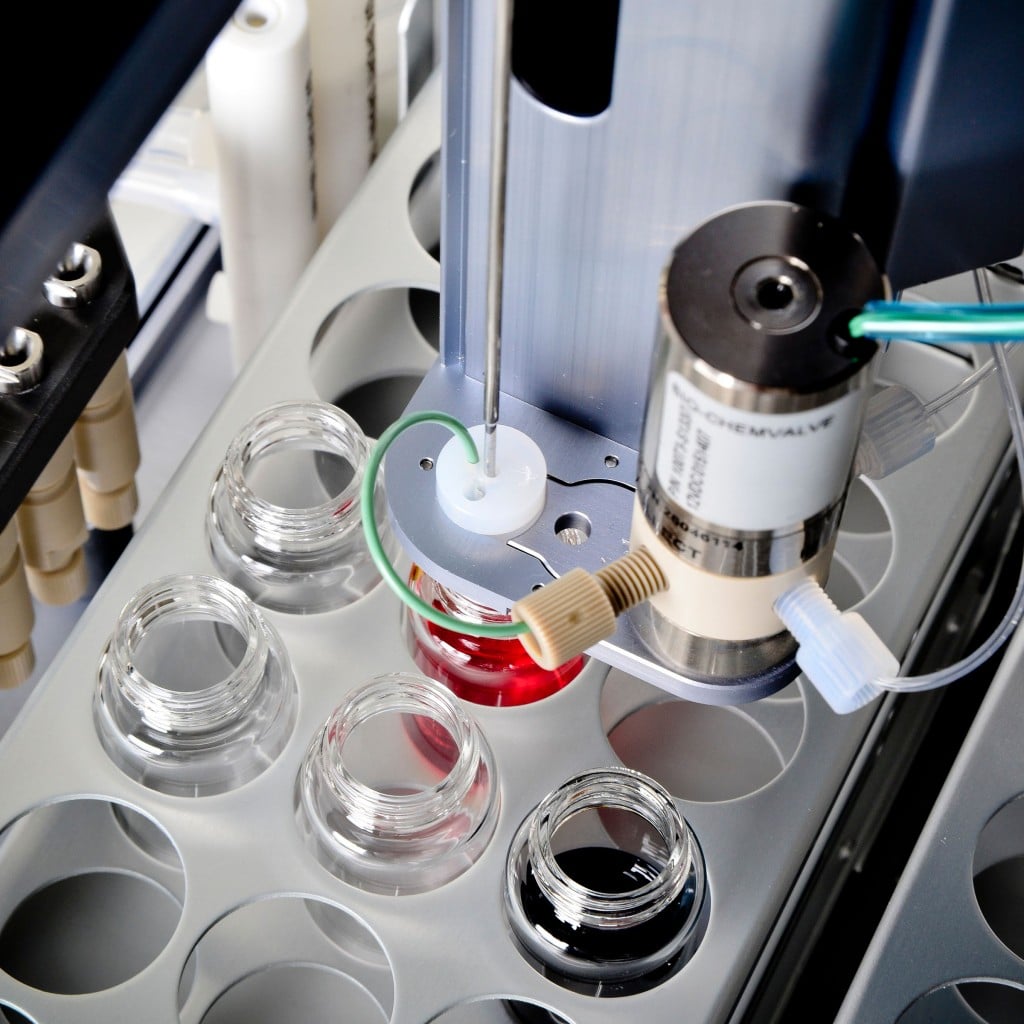This includes UV sensors, a fraction collector, and even an autosampler for loading different reagents for each reaction.
This allows the user to carry out optimisation investigations across a large parameter workspace, varying time, temperature, stoichimetric ratios and concentration.
The R-Series software is configured for a large number of different collector options, and these may of course be added to in the future.
- Gilson FC203B
- Gilson GX-241
- Gilson GX-271 (used as fraction collector, autosampler or both)
- Gilson 215 (used as fraction collector, autosampler or both)
Choose What To Collect
R-Series software calculates the “steady state” part of the reaction output and displays this as a graph to the user for guidance. The user can elect to collect the entire peak, if required, or just the steady state section of the reaction product.
Choose How to Collect It
For each individual reaction that you schedule, you can choose how many vials to collect in. For example, in one reaction you might choose to collect a large quantity that needs to be split across many vials, or you may wish to investigate changes throughout a reaction (for example if you suspected variable catalyst activity for a large reaction) and hence separate the peak into multiple samples.
Analytical Samples
For analytical purposes it may be useful to collect a separate small aliquot that is representative of the whole vial. The system can be configured to collect this sample (in a separate vial) in the middle of collection of the main product vial (i.e. from the centre of the product peak).
Modify the reaction list in Real Time
It may turn out partway through an automated sequence that some of the later scheduled reactions in the list are no longer required or need to be modified. (Perhaps analysis of early output has been conducted or outcomes deduced from visible evidence). In this case, it is possible to disable any item in the reaction list that has not already been started. This allows the system to move into more valuable reactions sooner. Alternatively the parameters of queued but not started reactions can be edited from the list.
Data Recording
Each reaction can be logged and the data saved for offline analysis. The data includes the number(s) of the vial(s) into which the product was captured, so can be cross referenced with analysis of the same vial tray.

